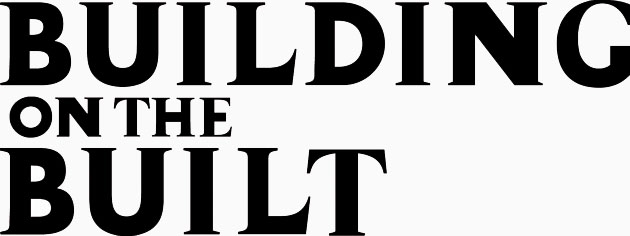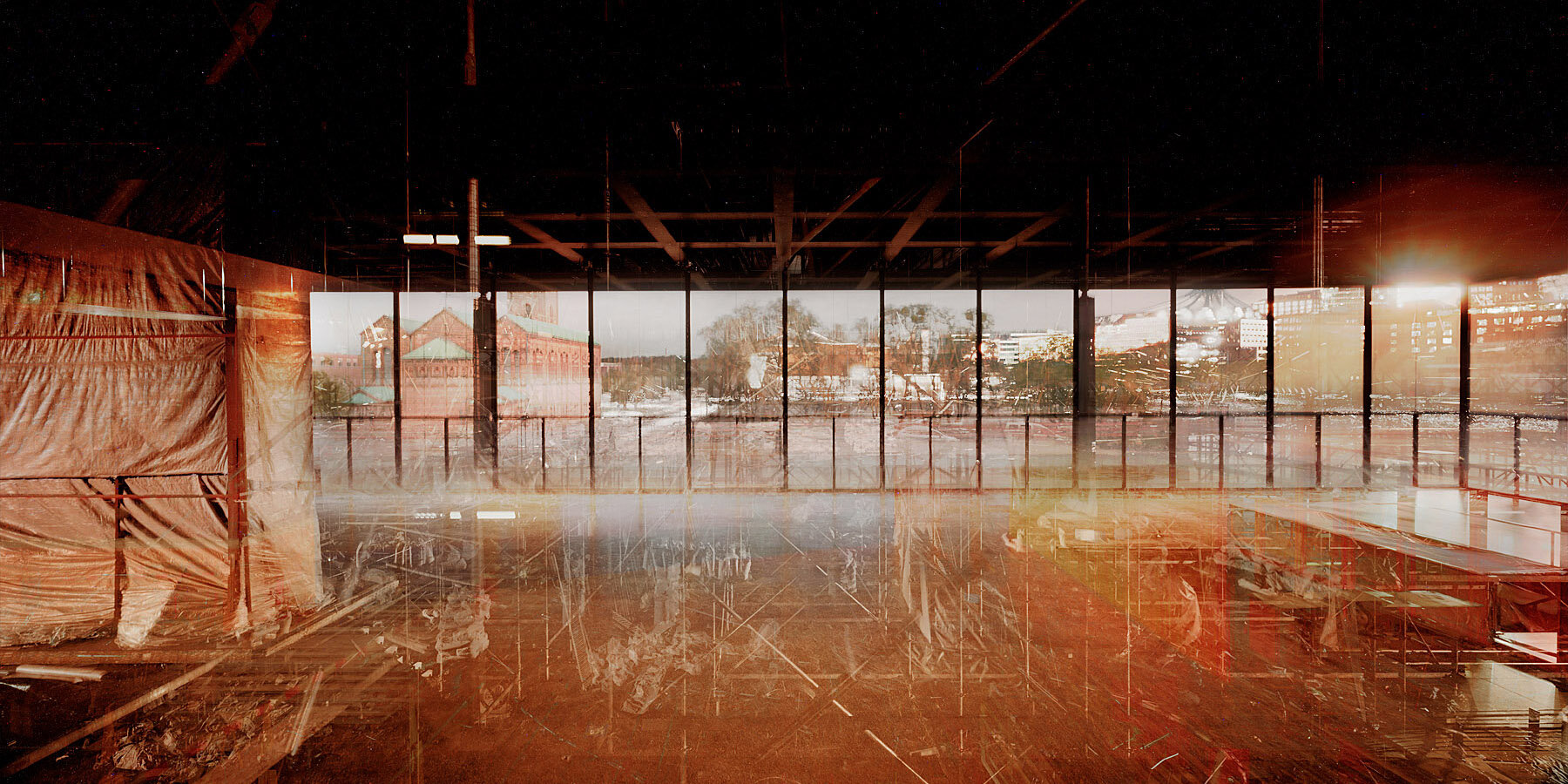Michael Wesely: Time Frames
Interview - May 2021
The Berlin based photographer Michael Wesely is renowned for his use of ultra-long exposures which allows him to capture extraordinary, time-saturated images. In contrast to the ubiquitous ‘finished’ images of the architectural press Weseley’s architectural tableau are fluid and open-ended, capturing the gradual pace of construction and the rhythm of diurnal cycles.
To coincide with the publication of his new book, documenting the restoration of Mies van der Rohe’s Nationalgalerie, Wesely shares his thoughts on photography, time and imperfection in an interview with Jonathan Tuckey.
BTOB The architectural establishment occupies a very narrow path, it celebrates the work of the individual over the collective, which is stark contrast to the collective collaboration that forms our cities and civilisations. It also frequently records these spaces devoid of occupation. Your work seems to challenge both these preoccupations.
MW My open shutter concept, which I am working with now since 1988, tells the story in a reversed way. Almost like a footprint in soft ground, the process of the construction is honoured through absence of the presence. There is no direct celebration of the worker (Empire State Building, Lewis Hine) and no highlighting the final new building. Mostly people are bewildered with my results, not showing architecture and not the showing the workers.
And yes, up to a certain degree there is a view through the new building, almost like an x-ray image, that shows a bit of the former gap or the former horizon line in that particular location.
BTOB The faint markings of occupation and time in your work remind us of reused and recycled ancient Greek parchments and manuscripts, from where we get the word palimpsest. What is it exactly that you are recording in your work?
MW My photographs can be seen as documentary movies, where, after recording, the timeline is cut up and you try to understand what was where first or later. That’s why I prefer to show these works in large scale prints, you can get closer and zoom yourself in, do some visual archeology and try to find some fragments of the construction process. While you see in the sky all the sunrises or sunsets over that long period of time, reminding us of the cosmic dance our planet is participating in our solar system.
MW My work also can be seen in close relation to Antonioni’s movie “Blow up”, where a detail of a photograph leads to confusion, opens a wild world of imagination.
Even my shorter long exposure works are palimpsests. Long exposure has a fascinating quality, that comes close to life. Creation and destruction are combined and sometimes in the resulting image construction “wins” over destruction and vice versa. In fact I am recording our contemporary time and through that concept, there is no appropriate aesthetic valuation, because you can not say that this or that time frame did not “work” properly.
In this sense, thinking about my last project, a seven year photograph of the re-construction of the Prussian Castle in the centre of Berlin (which now is called Humbold Forum), I would have photographed that place even if a different building was built here. I follow our time and if I think it is important, I place a camera there to record time there.
BTOB There is a stillness in your work, as if somehow removing the clutter of daily interaction allows the essence of the space or the city to be revealed. As an artist how would you describe your subject?
MW Presence through absence.
BTOB Would you say that nostalgia is captured in your work, clearly marking the passing of time and the recording of change?
MW All photography refers strongly to nostalgia, to special moments that will never come back, carried away by the rapid stream of our tremendously complex lives. Probably my works are scary or make people uncomfortable through their reminding quality: we are all so temporary, dust in the wind of millions of years time that passed and will pass.
BTOB During the time taken to make an image are you actively connected with it and the process or do you leave it and move onto other things?
MW In a sideline of my life, I follow my projects through news, if they are more public, as the Humboldt Forum, or even via the architects or construction engineers. It is quite easy to think and forget about the cameras at the same time. Maybe it’s like with your grown up children, you know they’re out there, doing things and you catch up once in a while.
The Nationalgalerie Project used only digital equipment and I received emails from my cameras every evening to report the process. If there was no email for some days, I knew that I had to go and discover the reason for that.
BTOB Donald Judd describes living in 101 Spring Street, surrounded by the details of the building, inspiring the work he went onto make. How did working in this way evolve for you as an artist?
MW Since I was a small boy I had a sense of bigger time frames. In some way similar to the protagonist John Franklin of Stan Nadolny’s “The Discovery of Slowness”. Through my affection for photography and my creative way to deal with the ABC of photography, it was quite easy to think of exposure time as content, rather than as only a technical aspect.
BTOB There is a sense of the unfinished or incomplete in the images. They feel open ended, which allows the viewer some space to inhabit the time in the images. Is that something you resonate with?
MW Absolutely. Quoting here Nam June Paik: “When too perfect, lieber Gott böse.” Chaos and organisation are the main forces in our world and we learned that 100% perfection is a dead end street. If you observe nature and science well, you find out, that in the end imperfection is more important. Why did Mies van der Rohe use B-quality bricks in his Haus Lemke project? The “dance of the brick walls” is such a pleasure to enjoy there at lake Obersee in Berlin.
BTOB What inspires the subject matter for your next project?
MW Human interaction is in my focus, since with Covid19 we had to develop new methods of communication.
BTOB What images are underway at present?
MW My Nationalgalerie Project will come out with a book from Hatje Cantz Publishers during the first week of May this year to co-incide with the re-opening of the building to the public.
NOTES
Many thanks to Michael Wesely for his time and help with this post.
Michael’s book on the Neue Nationalgalerie is available from Hatje Cantz Publications.
Interview conducted by Jonathan Tuckey, March 2021.
Images © Michael Wesely
Posted 7th May 2021.








